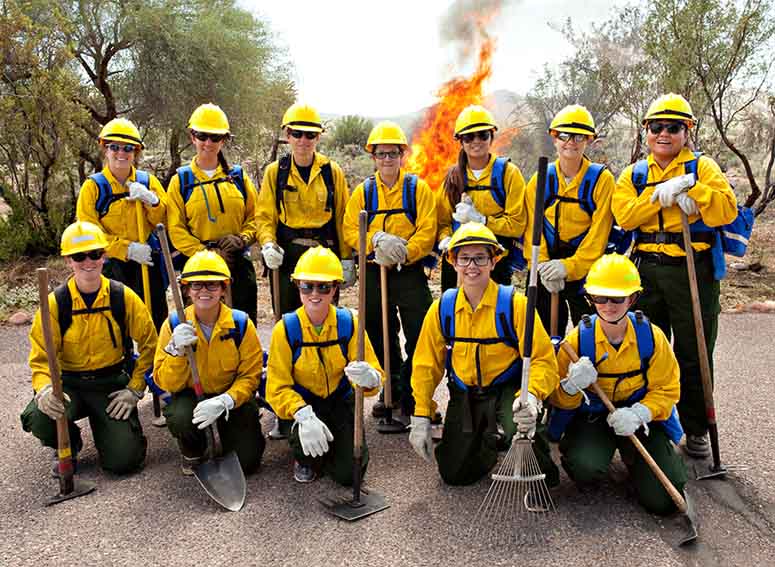
The representation of women in the wildland fire business is currently somewhere around 10%, but some women have set out to increase that number. One of their methods that seems to be working is the Women in Fire Bootcamp that took place in Albuquerque and Phoenix over two weekends in September as part of a Forest Service outreach program in Region Three (Arizona and New Mexico).
Founder Bequi Livingston of the Forest Service’s Regional Office in Albuquerque describes the origins in an email: “about ten years ago, I started talking the idea of a “Wildland Firefighter Boot Camp” here in the Region and there was not much interest at the time. As we continued struggling with recruitment and retention of women in wildland firefighting, especially here in Region 3, the idea came about to host a “Women In Wildland Fire Boot Camp” to target our female audience. Luckily, our FAM (Fire and Aviation Management) staff liked the idea and were willing to help fund our first Boot Camp back in March 2011. Our first Boot Camp in March 2011 was great and we had 20 candidates here in New Mexico and I believe, 14 in Arizona. We then hosted the Boot Camp again in March 2012 with not quite as many applicants and did not have a 2013 Boot Camp due to lack of funding. Last fall, I developed and submitted a proposal to the Forest Service FAM Diversity Program to receive funding and support to keep the efforts going. This was with much help from Helen Graham (Assistant Fire Management Officer-Tonto National Forest) in AZ and Linda Wadleigh (Mogollon Rim District Ranger-Coconino National Forest). Luckily we received special project funding through our Washington Office FAM to help fund and support the Boot Camp for the next three years.”
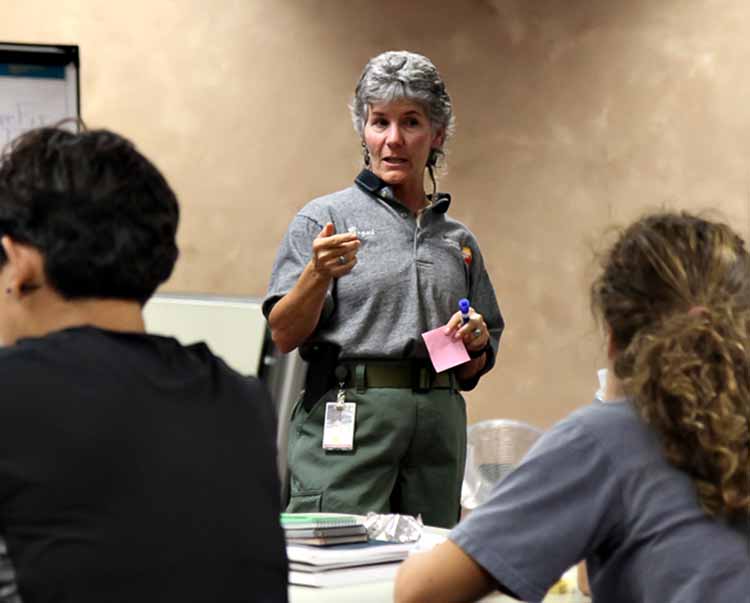
Ms. Livingston continued: “Part of this history includes my personal story and challenges as one of the first women in wildland fire and also my experience in Region 5 with the horrid Consent Decree. One of my intentions is to provide a safe and trusting environment for these candidates with great instructors (men and women) to ensure that we set them up for success rather than failure.”
“Although the program’s intent is to recruit and train women as its target audience, we are very inclusive in that we accept and consider ALL (her emphasis) applicants equally, including males. In fact, we have our first male in our current New Mexico session and he’s been great. We did not get enough applicants to fill all our slots for the New Mexico Boot Camp and had several female applicants pull out, which left us with additional open slots. Josh turned in a good application, is very interested in the program and is in one of those slots. Although our primary intention is to recruit and train women as the target audience, we consider all applicants equally”, Ms. Livingston added.
Jeb Koons, a Fire Management Officer from the Coconino National Forest and one of the Arizona Bootcamp’s instructors summed it up this way: “the program is to recruit women, but once they are here, they are all firefighters”.
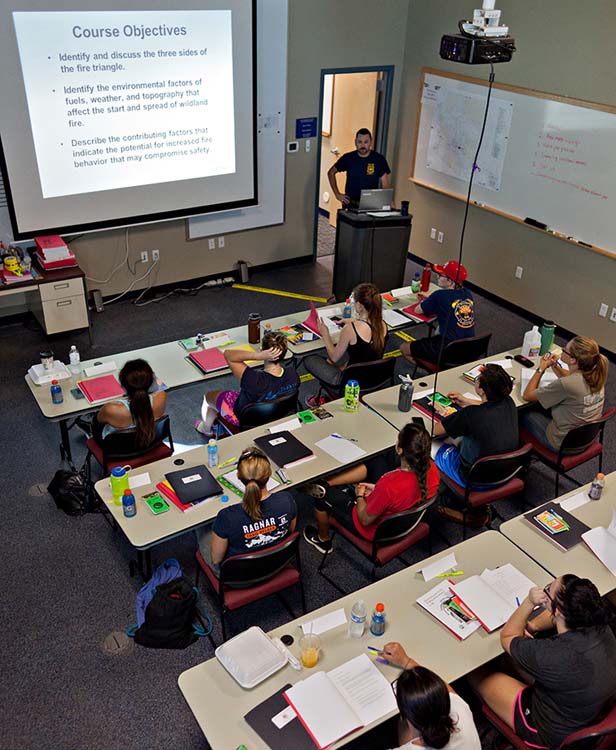
So it was all classroom the first weekend, with more classroom work the second weekend with a field day hosted at the Tonto National Forest’s Goldfield Admin Site on the Mesa Ranger District. There the lectures were put into practice with hands on experience digging line, water handling, mop up, tool sharpening and fire shelter practice along with familiarization with firing devices, pumps, engines and getting used to working together as a crew.
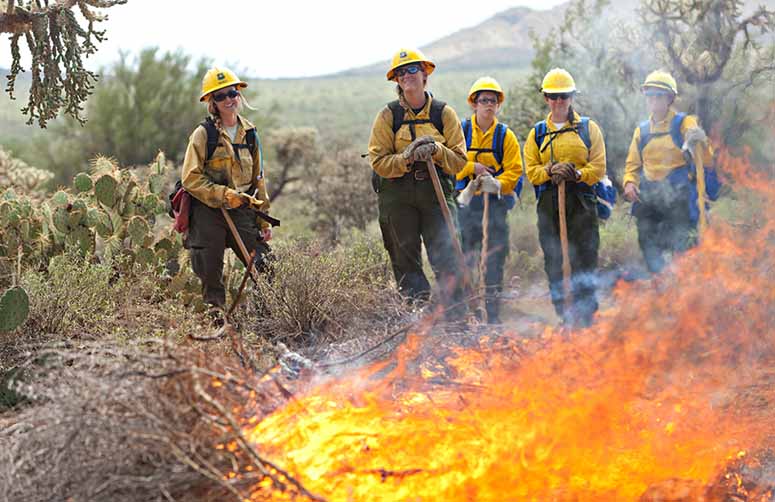
Katie Markey and Kaly Spinler, both previous graduates of the program and now seasonals on a Coronado National Forest engine, were on hand to assist the instructors and help mentor the participants. When asked about what they thought was the most helpful part of their bootcamp experience Ms. Markey, now in her third season in fire, mentioned the networking was invaluable “I’d say the support crew helped me the most. We got a great cadre who really wanted us to succeed and helped us — gave us the tools to reach out and meet people to get me my job.” Ms. Spinler reinforced Ms. Markey’s thoughts saying: “other than just the skills [I learned in class] was that I had a bunch of people that were willing to help, give references for me and help me find a place to get a job.”
While the Region 3 Bootcamp is in its third year, Utah recently began a similar program. Forest Service Fire Ecologist Linda Chappell explained: “After talking to Linda [Wadleigh] about the success they’d had here in Region 3, I got a group together in southern Utah to put in a similar grant request and get money to initiate a program similar to theirs. Not exactly the same, but similar enough. We knew we had a very distinct shortage of women, especially in operations but also in other support functions and knew we needed to do something to change that.”
“We started last spring. Our two fire management officers decided that whether or not we got funding, they were willing to do their best to support us. Despite the fact that our funding did not come in until late, we were set up and running already.”
Ms. Chappell continued: “We did our recruitment last fall, ran the numbers and realized that in operations, we’re below ten percent on all three forests (Fishlake, Dixie, Manti-LaSalle National Forests) for women in arduous fireline duties. Our goal this year was to recruit 20 people, get them pack tested and get them through fire school so that we could use them as ADs (work at Administratively Determined pay rates).”
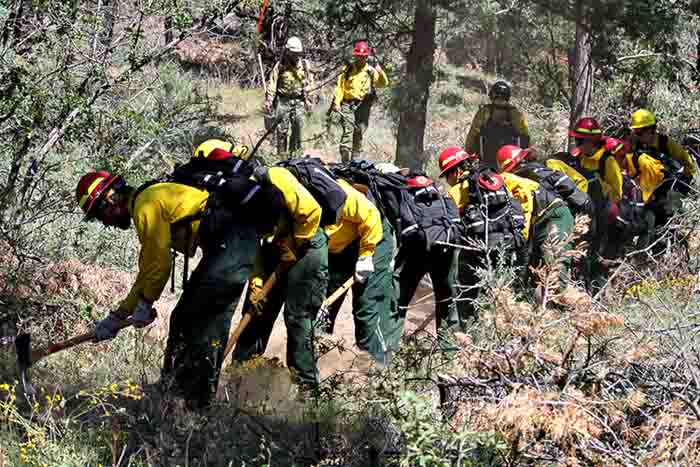
“We recruited 24 women. We got 13 of them through fire school, through pack testing. We had some attrition due to getting other jobs. Which was great. Some of them got fire jobs. Some of them got other jobs. I think we’ll see two or three of them next year.”
“There is a group of us, I guess, we feel that fire has been good to us” said Ms. Chappell. “We’ve had good careers. Yes, we need more women but there is a drive, in this small group, to just give back. We feel like the program has been good to us. We would like to share it with others. Part of reaching out to other women is: Hey, this is really interesting. It’s really fun. It’s a good career. Come with us and go learn to be part of fire. Learn to be a student of fire.”
The seeds of change planted in Region 3 three years ago have taken root and more seeds have been planted in Utah. Perhaps this “grow your own” solution for increasing women in the fire service will continue to spread.
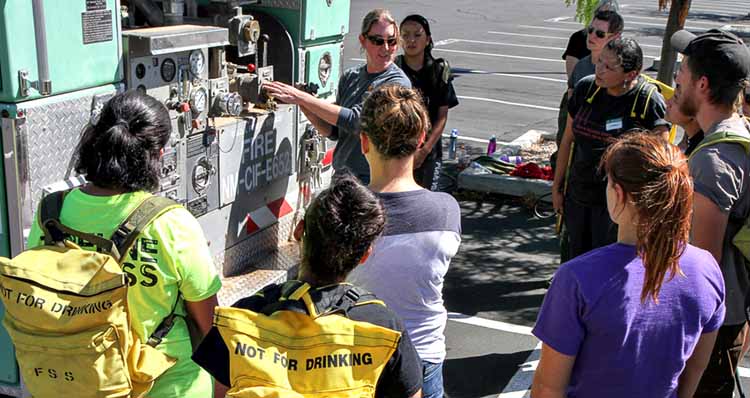
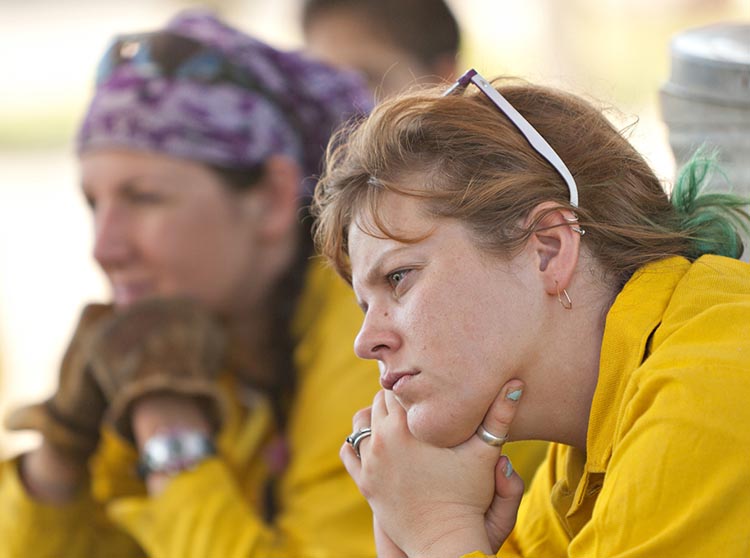
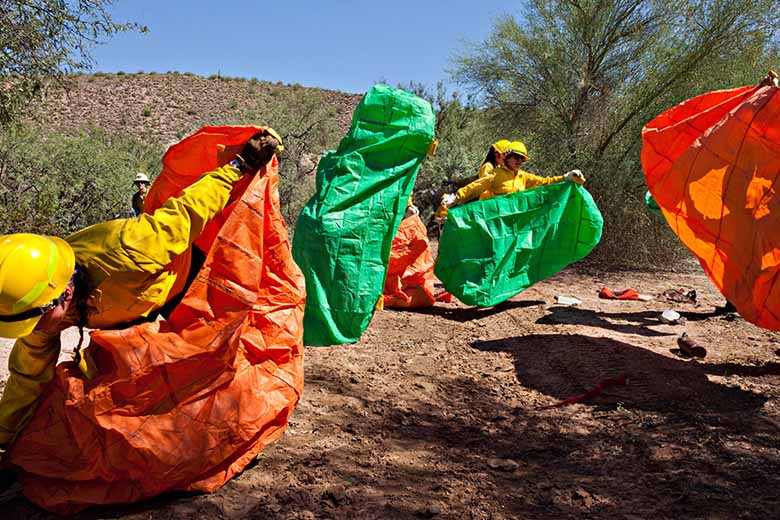

This is a great program as women are stronger and smarter than men. As ex-military, I have first-hand experience. I’m too old now, but hooray for all the great ladies now serving in the forest service and related jobs. I’m within 50 miles of the King Fire and know the women will do well in related situations in the future . . . . if, extensive training (like that the guys get) can be continuous. God Bless. P
Great to see this. Hopefully they will start getting that nomex dirty.
In 1998 I worked on the overhead team on a fire in Saskatchewan. There were about 400 firefighters on the fire and 1 crew was all women. They were the best crew on the fire, hard workers, experienced and all Cree First Nations people. I do not know if the crew still exists but their reputation was top notch and their productivity was outstanding.
The real question is how may from the camps are fighting fire now?
Its good start. The FS needs to reinstitute the college programs as well.